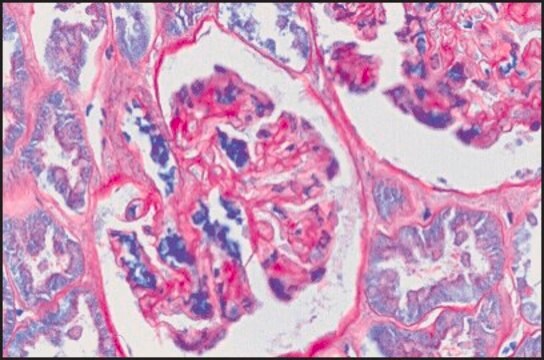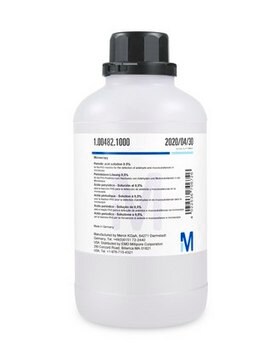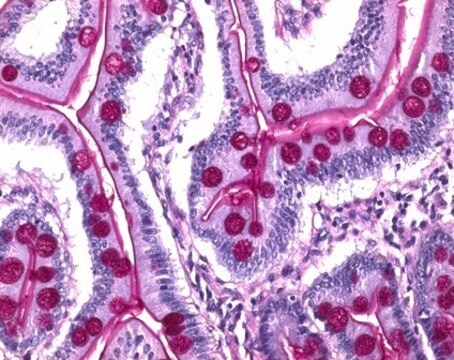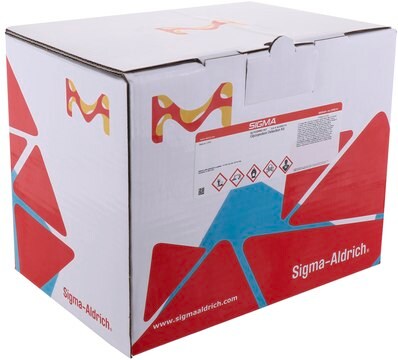About This Item
Recommended Products
grade
ACS reagent
Assay
99%
99.0-101.0% (ACS specification)
form
powder or crystals
reaction suitability
reaction type: C-H Activation
reagent type: catalyst
reagent type: oxidant
impurities
≤0.01% insolubles
≤0.01% other halogens
ign. residue
≤0.01%
mp
122 °C (lit.)
solubility
water: soluble
anion traces
sulfate (SO42-): ≤0.01%
cation traces
Fe: ≤0.003%
heavy metals: ≤0.005%
application(s)
histology
SMILES string
OI(O)(O)(O)(O)=O
InChI
1S/H5IO6/c2-1(3,4,5,6)7/h(H5,2,3,4,5,6,7)
InChI key
TWLXDPFBEPBAQB-UHFFFAOYSA-N
Looking for similar products? Visit Product Comparison Guide
General description
Application
- Oxidation of alcohols to ketones and aldehydes.
- Oxidation hydroxylamine derivatives.
- Oxidation of arenes to quinones.
- Deprotection of the dithio- and oxathio-derivatives.
- Oxidative degradation of epoxidized natural rubber (ENR).
- Oxidation of urazoles and bis-urazoles to triazolinediones.
- Oxidative cleavage of glucosazone.
Signal Word
Danger
Hazard Statements
Precautionary Statements
Hazard Classifications
Aquatic Acute 1 - Aquatic Chronic 1 - Eye Dam. 1 - Ox. Sol. 1 - Skin Corr. 1B - STOT RE 1 Oral
Target Organs
Thyroid
Storage Class Code
5.1A - Strongly oxidizing hazardous materials
WGK
WGK 3
Flash Point(F)
Not applicable
Flash Point(C)
Not applicable
Choose from one of the most recent versions:
Certificates of Analysis (COA)
Don't see the Right Version?
If you require a particular version, you can look up a specific certificate by the Lot or Batch number.
Already Own This Product?
Find documentation for the products that you have recently purchased in the Document Library.
Customers Also Viewed
Our team of scientists has experience in all areas of research including Life Science, Material Science, Chemical Synthesis, Chromatography, Analytical and many others.
Contact Technical Service











